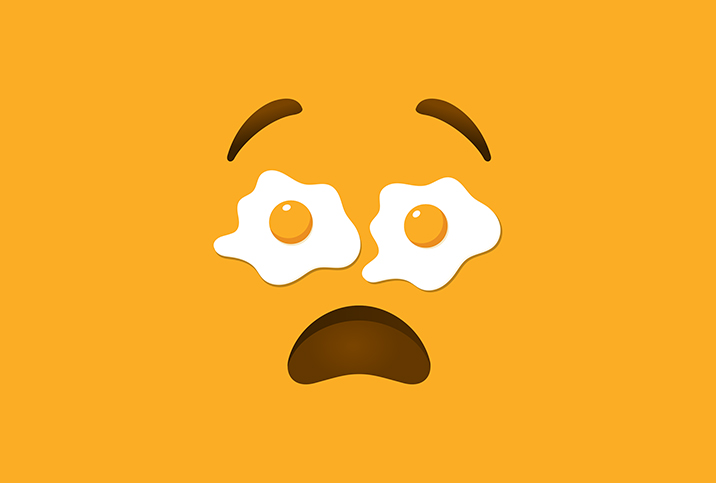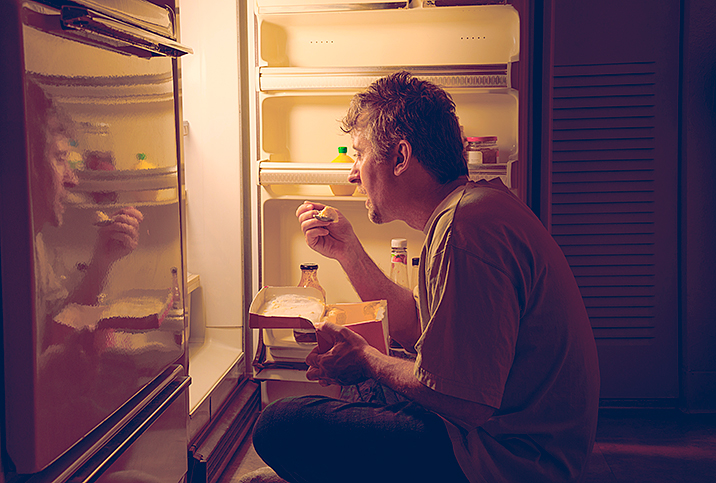How Much Fiber Do Women Need and Where Can They Find It?

Key Points
- Fiber is important for digestive health and for avoiding some diseases, such as type 2 diabetes and certain cancers.
- Only about 5 percent of the population incorporates enough fiber into their diets.
- Fiber-rich foods include bran cereals, whole grains, broccoli and sweet potatoes.
Fiber is essential for staying healthy, but how much do we need for our diet and sexual health? We've been told getting enough fiber helps with weight loss, but what happens if you overdo it? How much fiber should women get, and what are the best sources?
What are the two types of fiber, and why does it matter?
There are two different types of fiber: soluble and insoluble. Soluble fiber can be found in oatmeal, fruits and vegetables. It dissolves in water, turning into a gel-like substance in the digestive system. Insoluble fiber is found in whole grains, nuts, and seeds and does not dissolve in water, said Melissa Snover, a registered nutritionist in Vero Beach, Florida, and the founder of Nourished, a nutritional supplement manufacturer.
These two types of fiber behave in different ways, but both are important to overall wellness.
"Soluble fibers help to regulate blood sugar levels, lower cholesterol and promote the growth of beneficial gut bacteria. Insoluble fiber … aids digestive health by preventing constipation and promoting regular bowel movements," Snover said.
What are the potential health benefits of getting enough fiber?
Everyone needs enough fiber in their diet. The right amount of fiber is associated with good digestive health and a reduced risk for the following health conditions, according to the National Library of Medicine:
- Heart disease
- Stroke
- Hypertension
- Certain gastrointestinal disorders
- Obesity
- Type 2 diabetes
- Certain cancers
Where you source your fiber can make a difference.
Getting a lot of fiber from grains reduces the risk of diabetes by 10 percent in men and women. Consuming a high amount of fiber from vegetables lowered this risk by 22 percent in all men, but not all women, a 2010 study suggested.
Soluble fiber can reduce the risk of the leading cause of death among women—that would be heart disease—by lowering LDL cholesterol (a.k.a the "bad" cholesterol), said Kelsey Costa, M.S., R.D.N., a nutrition consultant for the National Coalition on Healthcare in Washington, D.C.
Fiber is key for healthy weight management, similar to getting the right amount of protein women need. Getting enough fiber can help women feel full, which improves their appetite control.
Diets rich in fiber can eliminate the need for anal douching and are associated with better gastrointestinal function. This reduces the risk of developing diverticulitis, a condition that can impact older women.
"Meeting or exceeding the recommended daily fiber intake should be a significant consideration for women's nutrition and overall health," Costa said.
Other health benefits of a high-fiber diet include the following:
- Improved reproductive health
- Decreased risk of breast cancer
- Relief from menopause symptoms, such as hot flashes and night sweats
- Decreased risk of colorectal cancer
How much fiber should I consume per day?
Only about 5 percent of the population meets the recommended per-day intake of fiber. This lack of fiber has led to what has been deemed a public health concern, according to the National Library of Medicine, in 2017.
Women should aim to consume 14 grams of fiber for every 1,000 calories of food. So if you consume 2,000 calories, your daily dietary fiber intake should be 28 grams, according to the U.S. Department of Agriculture.
To get the health benefits of fiber, eat a variety of high-fiber foods, said Tara Scott, M.D., the founder of Forum Health Akron in Ohio.
"For most women, it's natural to focus on calories, especially when you're planning to shed some weight or build lean muscle, and on macronutrients to ensure proper dietary balance in your menu," Scott said. "But fiber can be your GI tract's best friend in ensuring optimal weight management, digestive health and immune strength."
What are good sources of fiber?
Fiber can be consumed through food and supplements. If you're trying to increase your fiber intake, you'll want to check food labels to compare the fiber content, said Allie Echeverria, M.S., R.D., an Atlanta-based dietitian and the founder of the Eaton Broshar Method.
Food sources
You might be surprised to learn some foods you always thought were high in fiber, such as brown rice, are not the best sources. Brown rice only has 1.8 grams of fiber per 100 grams, while couscous has nearly twice that, with 2.8 grams of fiber per 100 grams, Echeverria said.
"It's important to gradually increase your fiber intake and drink plenty of water to avoid digestive discomfort," said Erin Palinski-Wade, R.D., a Sparta, New Jersey-based dietitian and the author of "2 Day Diabetes Diet."
Foods that are great sources of fiber for women include the following:
- Fruits with skins, such as apples, plums, pears and peaches
- Cooked beans, such as kidney beans, navy beans, black beans and lentils
- Almonds
- Bran cereals
- Whole grains
- Berries, such as raspberries and strawberries
- Broccoli
- Avocado
- Popcorn
- Dried fruits, such as prunes and figs
- Sweet potatoes
- Brussels sprouts
- Chia seeds
- Celery
- Leafy greens, such as spinach or kale
- Oatmeal
Fiber supplements
If you struggle to meet your daily fiber intake through food, fiber supplements can be helpful. Supplements are not a complete substitute for getting fiber from whole foods, however, Snover said.
Fiber supplements tend to provide a concentrated form of fiber, and taking too much of these supplements without enough hydration can lead to gas, bloating and discomfort, she added.
Recommended
- The Mediterranean Diet Can Help With Diabetes (and Your Erection): It's not a magic potion, but as part of a lifestyle, these foods can confer healthy rewards.
- Is Your Lifestyle Contributing to Your ED?: The (bad) choices you make in five areas could increase your chances for erectile dysfunction.
- Tips for Preventing and Improving Bad Nutrition: There's no magic formula for a better diet. It takes commitment and a little education.
How long does it take fiber to work?
Digestive benefits such as reduced constipation and improved regularity are usually felt within a few days to a week. Benefits such as lower cholesterol and blood sugar are more gradual changes that tend to take a few weeks or months, according to Costa.
You need both kinds of fiber as part of a healthy diet to experience the greatest health benefits.
It can take up to several months or years of consistent high fiber intake to see long-term benefits, such as reduced risk of chronic diseases and certain types of cancer, Costa said.
Does fiber cancel out carbs?
Fiber does not cancel out carbs. Fiber itself is a type of carbohydrate that provides calories, Snover said.
When you look at a food label, "total carbohydrate" includes fiber. We do not fully ingest fiber, so it has little to no impact on our calorie intake or blood sugar. You can subtract the amount of fiber from the total carbohydrates to estimate how many carbs your body is consuming.
This is referred to as net carbs, Palinski-Wade said.
Fiber can positively impact how our bodies process and absorb carbohydrates.
"When we consume high-fiber foods, the fiber slows down the digestion process, which can moderate the release of glucose into the bloodstream and help prevent spikes in blood sugar levels to promote better blood sugar control," Snover said.
Fiber-rich foods can reduce your overall calorie intake by helping you feel fuller for longer. Carbs aren't always bad for you. It's the refined, processed, calorie-rich, low-fiber and low nutritional value carbohydrates, such as sugary treats and white bread, that can negatively impact your health when they are consumed in excess.
This is why it's best to "focus on consuming a balanced diet that includes both fiber-rich carbohydrates and other essential nutrients for optimal health," Snover said.
How can you get fiber on a low-carb diet?
It is challenging but possible to get fiber on a low-carb diet. Foods high in fiber but low in carbs include the following:
- Leafy greens
- Broccoli
- Cauliflower
- Avocados
- Nuts (almonds and walnuts)
- Seeds (chia and flax)
- Berries
- Psyllium husk
"Consider supplementing your diet with a fiber supplement if necessary. However, it's essential to consult with a healthcare professional or registered dietitian to determine the best approach to meet your specific dietary needs," Snover said.
What happens if you eat too much fiber?
What constitutes too much fiber will vary from person to person, according to Echeverria.
Fiber is a good thing, but an overabundance of it can lead to poor health. A diet too rich in fiber can lead to nutritional deficiencies due to reduced absorption of certain minerals, Costa said.
Other signs your diet is too high in fiber include the following:
- Bloating
- Gas
- Cramping
- Constipation
- Discomfort
- Changes in bowel movements
- Constipation
- Diarrhea
However, these symptoms could be signs of irritable bowel syndrome (IBS).
The bottom line
There's a good chance you're not getting enough fiber. Incorporate a balance of insoluble and soluble fiber into your diet for better digestion and to help potentially reduce your risk of some diseases.
While too much fiber varies from person to person, it is possible to overdo it. That can lead to bloating, gas and even a nutrient imbalance.


















